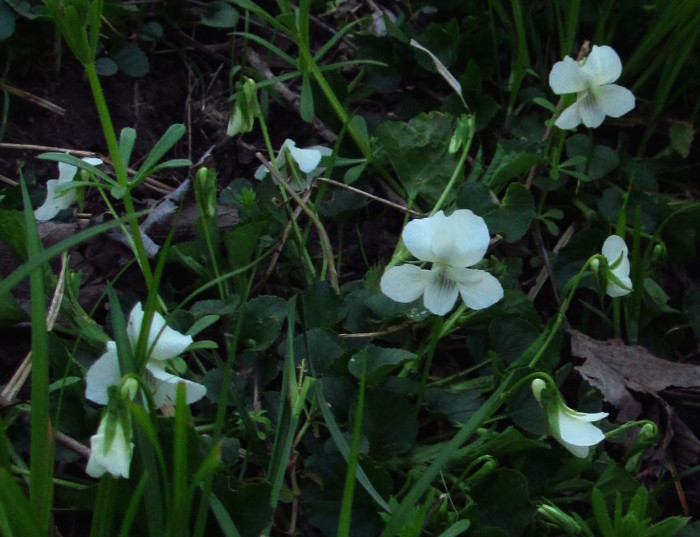Aside from dandelions, violets are probably the wildflowers most likely to turn up in Iowa yards, whether you live in the city, suburb, or countryside. Common blue violet (Viola sororia) is prevalent and blooming in large numbers now. I see quite a few Downy yellow violets (Viola pubescens) near wooded areas of Windsor Heights. Today’s featured plant is native to Iowa and most states to our east, but according to John Pearson of the Iowa Department of Natural Resources, it is relatively rare in our state.
I enclose below more pictures of Striped cream violet (Viola striata) in the company of other spring wildflowers.
This post is also a mid-week open thread: all topics welcome.
The Illinois Wildflowers website has a botanically accurate description of this plant’s foliage and flowers. Excerpt:
Each flower is about ¾” across, consisting of 5 white rounded petals, 5 light green sepals, a pistil, and inserted stamens. The two lower lateral petals have patches of fine white hairs (or beards) near the throat of the flower, while the lowermost petal has purple veins that function as nectar guides.
Along the Windsor Heights bike trail, I see more violets that are mostly white but have large purple areas. According to John Pearson, these are likely color variants of the common blue violet. They are easy to distinguish from the striped cream violets, which have only a few purple lines to attract pollinators.
Group of striped cream violets. The mottled leaf to the right is foliage for dogtooth violets, also known as trout lilies:
Another striped cream violet growing near foliage for dogtooth violets. The leaves in the lower left corner belong to a toothwort plant:
Striped cream violet with Virginia waterleaf foliage (the waterleaf will bloom sometime next month):
Striped cream violet near wild ginger foliage; common blue violets can be seen near the upper left.
More striped cream violet with wild ginger leaves:
Wild ginger flowers are difficult to photograph. The maroon-colored blossoms grow along the ground underneath the leaves, so are easily lost in shadow. In this shot you can just make out a wild ginger flower immediately above the striped cream violet (mostly closed).
Striped cream violet and littleleaf buttercup (littleleaf crowfoot) being overshadowed by a colony of Virginia bluebells:
Striped cream violets growing near a Virginia bluebell plant:
The foliage in the lower right portion of this shot is common black snakeroot, which will bloom in early summer. The flowers will become annoying burs by late summer.













